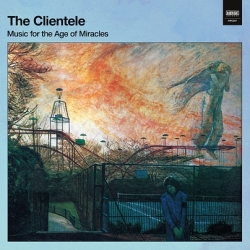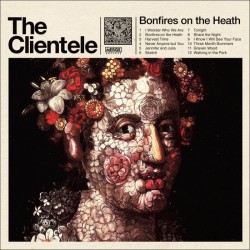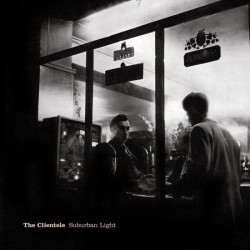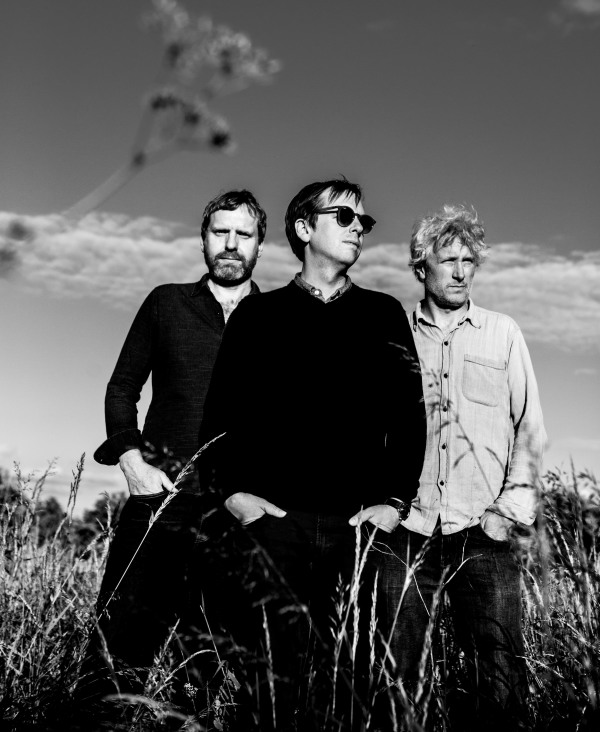Photo by ANDY WILSH
Generally speaking, and for good reason, it is considered poor form to simply cut and paste a band’s press kit bio onto your Q&A and call it an intro, but this time we’ll make an exception, for the following will likely be the closest we ever get to a definitive explanation of the hushed grandeur of The Clientele:
The Clientele formed a long time ago in the backwoods of suburban Hampshire, playing together as kids at school, rehearsing in a thatched cottage remote from any kind of music scene, but hypnotized by the magical strangeness of Galaxie 500 and Felt and the psych pop of Love and the Zombies. Singer Alasdair MacLean still recalls a pub conversation where the band collectively voted that it was OK to be influenced by Surrealist poetry but not OK to have any shouting or blues guitar solos. From that moment on, they put their stamp on a kind of eerie, distanced pure pop, stripped to its essentials and recorded quickly to 4-track analogue tape. Instantly identifiable, The Clientele sound like no one else, although they are cited as an influence by bands as diverse as Spoon and the Fleet Foxes. It’s been said that the greatest bands always create their own individual sound; The Clientele have gone one further and created their own world.
After releasing seven albums of sublime spectral pop followed by a seven year hiatus, The Clientele are back  with the new and altogether wonderful Music For The Age Of Miracles. In advance of their sold out show at the Boot & Saddle on Friday, we sent some questions about the new album to the Hobbit hole in the mossy side of merry old England wherein resides Alasdair Maclean, The Clientele’s sleepy-eyed resident genius singer/songwriter/guitarist. Here’s what he had to say:
with the new and altogether wonderful Music For The Age Of Miracles. In advance of their sold out show at the Boot & Saddle on Friday, we sent some questions about the new album to the Hobbit hole in the mossy side of merry old England wherein resides Alasdair Maclean, The Clientele’s sleepy-eyed resident genius singer/songwriter/guitarist. Here’s what he had to say:
PHAWKER: The constellation Lyra is name-checked in two songs on the new album — which is really great, by the way — why Lyra out of the 88 constellations recognized by the International Astronomical Union?
ALASDAIR MACLEAN: Lyra appears in the northern hemisphere in April and disappears in October. It’s always symbolized a harp or a lyre or music. Orpheus pops up here and there on the album and this is one of the places. I like the idea of stars and their symbolism and how it crops up in the everyday; the Pleiades are seen in all cultures as seven female figures running away or leaving. And that maps onto the seven sisters road in London near where I live.
PHAWKER: When is The Age of Miracles, now or in the past? What miracles make up said Age? Is this song/title related to the 2012 novel by Karen Thompson Walker?
ALASDAIR MACLEAN: There’s a John Cale song about a man who listens to a radio and believes the sound is beaming in from a magical, paradisical space – a far off radioland which he is doomed to wander up and down the airwaves searching for but never discovering. I like the same idea of exile from something – childhood or a purer state of being which we can now only see from the corner of the eye and which perhaps never existed. But it’s also a reflection of our own times- the widespread and tragic return of irrationality and magical thinking.
PHAWKER: “Museum Of Fog” is an intriguing title — they all are, really — for a song about a distant memory of illicit consumption of alcohol as young teen. Why that title and what part of the stories relayed in the song are true, or close to it, and what parts are wildly embellished or made up out of whole cloth?
ALASDAIR MACLEAN: It’s all true. I don’t know why I called it the museum of fog- it seemed to fit the feel somehow – or it could have been the name of the club night the band were playing in the story.
PHAWKER: From 2000 to 2010, the band released seven beloved and acclaimed albums and then went dark, more or less, for the next seven years. Why the hiatus and what prompted the return?
ALASDAIR MACLEAN: I’d got sick of it for about 400 reasons. But mostly I felt there was nothing left for me to say.
Then I bumped into Anthony Harmer on a street corner in Walthamstow in 2014 – the first time I’d seen him in twenty years. We used to play guitars together in the mid ‘90s and everyone said our voices sounded good. But ultimately we couldn’t get on, as we were both too bossy, and we stopped writing to each other, and moved on. I formed the Clientele. I had often wondered what had happened to him since. It turned out – he told me- he’d studied the Santoor, an Iranian version of the dulcimer, and over decades become a virtuoso, at least by my standards. He suggested we have a jam together.
In the early 2000s, I used to hear an old man play the Chinese dulcimer at one end of the Greenwich foot tunnel, on the way to work, and I’d always been enchanted by the sound – like a carousel crossed with a music box crossed with a harpsichord. I’d always wanted to get it on a Clientele  record.
record.
Ant and I now lived three streets away from each other, it turned out. He started to arrange my songs. He let me write and sing them and he came up with ideas for how they should sound. This carried on until we had an album. I called up James and Mark and asked them if they wanted to make another Clientele record. They did, and so we did.
PHAWKER: Hypothetical question: you wake up in the middle of the night and your home is on fire, there is only time to save one album from your collection, which one do you grab and why?
ALASDAIR MACLEAN: It would have to be my dad’s copy of Neil diamond’s 20 Golden Greats which I loved before I developed the defences of irony or good taste,
THE CLIENTELE + HOOPS @ THE BOOT & SADDLE ON FRI. NOV. 3RD SOLD OUT

